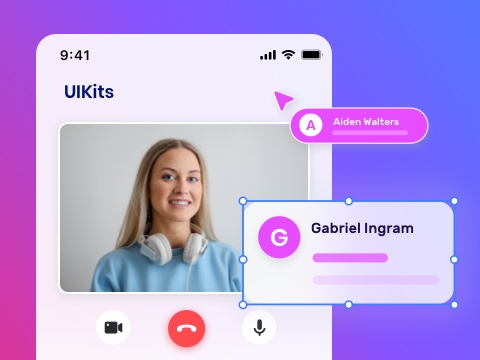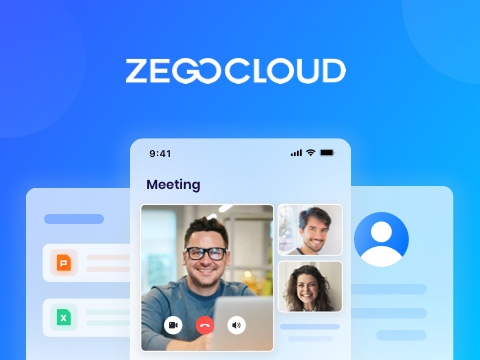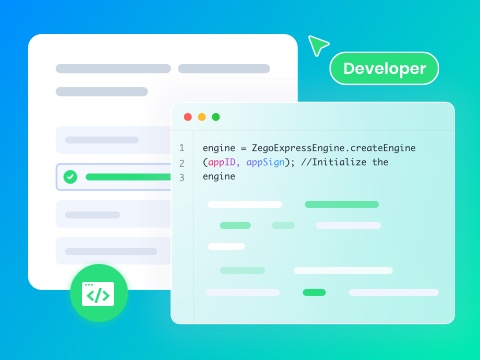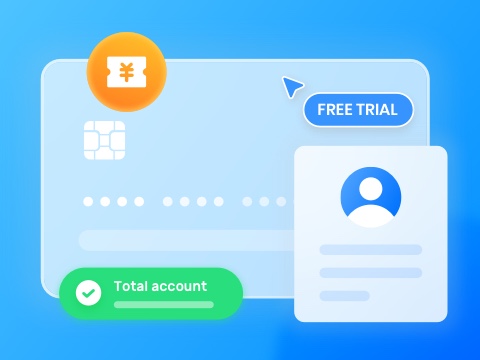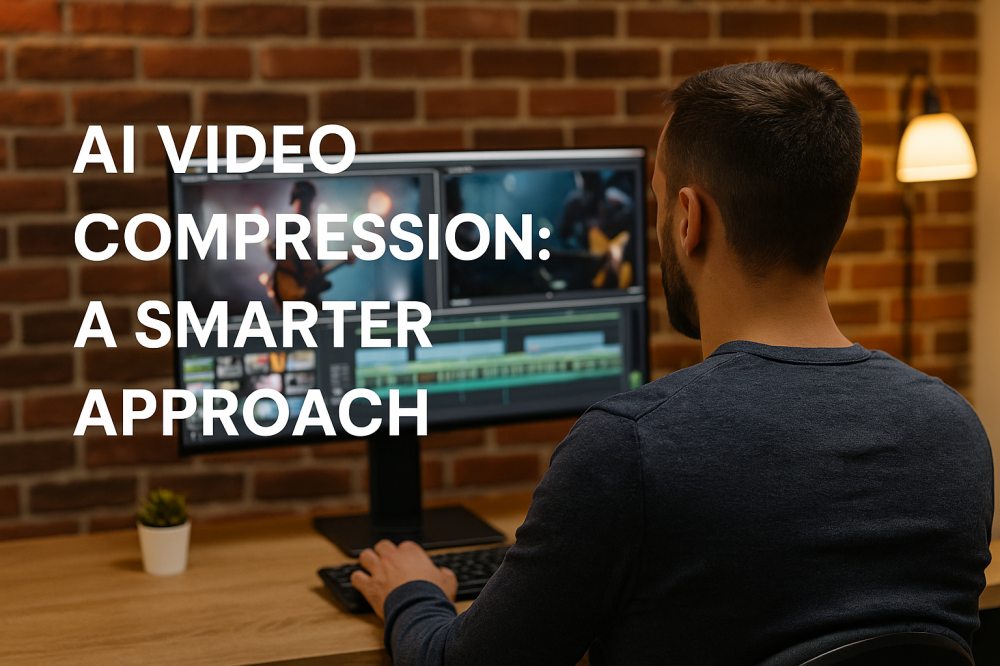Video is eating the internet—and the pressure to deliver it flawlessly has never been higher. From 4K sports broadcasts to AI-generated avatars and real-time game streams, platforms are being pushed to deliver crystal-clear video at lower bitrates, on slower networks, and to more devices than ever. But here’s the problem: traditional compression can’t keep up. Users expect instant playback, zero buffering, and sharp visuals—any delay or pixelation, and they bounce. That’s why AI video compression is quickly becoming a must-have for modern streaming, media, and real-time communication platforms.
What is AI Video Compression?
AI video compression uses machine learning models to analyze and optimize video content before and during encoding. Unlike traditional encoders that apply fixed settings to all video types, AI-powered systems adapt to each scene’s complexity, motion, and visual details.
By making real-time decisions—such as where to allocate more bitrate or when to apply visual enhancement—AI compression can deliver higher-quality video at smaller file sizes and reduce bandwidth usage, all without manual tuning.
How Does AI-Driven Video Compression Work?
AI-driven video compression follows a smart, step-by-step process that adapts to each video’s content and complexity. Instead of applying the same compression rules to every frame, AI models analyze visual data and make real-time adjustments to improve efficiency and quality.
Here’s how it works:
1. Scene Analysis
AI models (such as convolutional neural networks) analyze incoming video to classify content types—sports, news, animation, user-generated, etc.—and evaluate scene complexity.
2. Quality Assessment
The system checks for quality issues like noise, blurring, block artifacts, or poor contrast. This helps identify frames that need visual improvement before compression.
3. Intelligent Enhancement
AI enhances image quality by adjusting brightness, reducing noise and flicker, smoothing out artifacts, and preserving fine details—making the video more compressible without quality loss.
4. Region of Interest (ROI) Detection
The AI identifies the most important areas on screen—faces, text, fast-moving objects—and allocates more bitrate to those regions for better visual focus.
5. Adaptive Encoding
Finally, the encoder uses all this data to apply optimized settings frame by frame. Bitrate, resolution, and compression parameters are adjusted dynamically to ensure the best possible result at the lowest file size.
Which Video Codecs Are Used Today?
Modern video streaming relies on a range of codecs, each optimized for different use cases. The most commonly used today include:
- H.264 (AVC): The most widely adopted codec for web video. It offers a good balance between compression efficiency and compatibility across devices.
- H.265 (HEVC): A newer codec that delivers better compression than H.264 at the same quality but requires more processing power and may face licensing restrictions.
- VP9: An open-source alternative developed by Google, commonly used on platforms like YouTube. It provides similar compression to H.265 but without licensing fees.
- AV1: A next-generation, royalty-free codec with excellent compression performance, gaining support from major platforms and browsers.
- Z264 / Z265 (ZEGOCLOUD proprietary): Used within ZEGOCLOUD’s real-time video SDKs to optimize low-latency transmission and visual quality, especially in cloud-side processing scenarios.
Each codec has its strengths depending on the use case. While H.264 remains dominant, newer codecs like AV1 and ZEGOCLOUD’s optimized solutions are driving the future of efficient, AI-powered video delivery.
The Limitations of Traditional Video Compression
Most platforms rely on traditional encoders to compress video files. However, these encoders often apply the same fixed rules to all video types—regardless of the content’s complexity. This one-size-fits-all approach struggles to balance bitrate, visual quality, and encoding speed.
As a result, content providers face common problems:
- Poor quality at fixed bitrates
- High storage and CDN costs
- Slow encoding performance
- Manual tuning required for different content types
- Subpar user experience with buffering or artifacts
Different types of videos—like a fast-paced soccer match versus a static talk show—clearly need different compression strategies. But traditional tools don’t adapt automatically.
Real Business Benefits of AI Video Compression
AI-powered video compression brings direct, measurable value to streaming platforms and content providers.
1. Lower Costs
By reducing video file sizes by 30–50% without compromising quality, AI compression significantly cuts storage needs, CDN bandwidth usage, and infrastructure costs. It also improves processing throughput, enabling platforms to handle more videos with fewer resources.
2. Better User Experience
Smaller files translate to faster video startup times, smoother playback on slow or unstable networks, and reduced data usage—especially important for mobile viewers. Users on low-end devices can also enjoy high-quality streaming with fewer interruptions.
3. Scalable and Future-Proof
AI compression systems adapt automatically to new content types, network conditions, and resolutions like 4K and 8K. This eliminates the need for manual tuning and ensures consistent performance as formats and viewer expectations evolve.
What’s the Future of Video Compression?
The future of video compression is intelligent, adaptive, and AI-powered. As video resolutions increase and viewer expectations grow, traditional fixed-rule encoding will no longer meet performance or cost demands.
AI will play a central role in enabling real-time, content-aware compression that balances quality, speed, and efficiency. Future systems will automatically adapt to content type, network conditions, and device capabilities—no manual tuning required.
Technologies like AV1 and neural compression models will become more mainstream, offering even greater savings in bandwidth and storage. At the same time, cloud-based encoding platforms like ZEGOCLOUD will help developers and platforms scale effortlessly while delivering superior viewing experiences worldwide.
AI-Powered Compression with ZEGOCLOUD
AI video compression offers a smarter, more adaptive way to deliver high-quality video at lower bitrates. Instead of applying fixed rules, AI systems analyze each scene—sometimes down to the frame level—and make real-time decisions to optimize encoding. This results in better visual quality, smaller file sizes, and faster processing times. ZEGOCLOUD takes this a step further by combining AI video preprocessing, intelligent bitrate control, and cloud-based H.265 encoding. This allows developers to deliver HD video experiences even on weak networks or low-end devices.
Key Benefits:
- Content-aware encoding powered by AI, with dynamic adjustments based on motion, complexity, and visual importance
- Z264/Z265 proprietary encoders designed for faster, low-latency compression
- AI-assisted resolution and color enhancement for sharper output
- Cloud-side processing to reduce load on user devices
- Automatic bitrate control to ensure smooth playback under changing network conditions
Whether you’re building a video chat app, streaming live games, or delivering 4K content to a global audience, ZEGOCLOUD helps you maintain top-tier video quality—without pushing up your data costs.
Try ZEGOCLOUD and get 10,000 free minutes for your first AI-powered video application.
Final Thoughts
As video continues to dominate online traffic, AI-driven video compression will become a key advantage for forward-thinking businesses. It’s no longer a futuristic idea—it’s a practical tool to improve quality, reduce cost, and enhance user experience today.
Ready to future-proof your video delivery? Start building with AI compression and see what ZEGOCLOUD can do for your stream.
Let’s Build APP Together
Start building with real-time video, voice & chat SDK for apps today!


